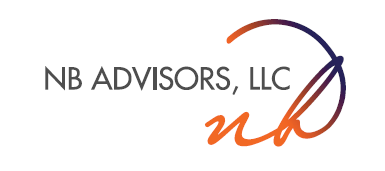Successful financial planning requires consistency, commitment, and a mid-year review
When facing a new year, it’s much easier to get motivated and enthusiastic about setting goals and making plans; after all, a fresh new calendar year seems like the ideal time to harness your energy and ideas in an effort to make a marked difference to the future that lies ahead.
However, it’s easy to lose that momentum as the month’s march on and our days are filled with the day to day tasks of managing a home building business. Success lies not only in having a plan but also in continuing to monitor and develop that plan with consistency and commitment throughout the year. Develop the habit of scheduling a mid-year financial check-up to reevaluate your goals to stay on the path of progress.
Check-in and check-up
Once you get through tax season, it can feel like one of your home building business’s bigger burdens is behind you. While that’s true in a sense, tax season is also the perfect time to review your financial plan and business goals.
Attaching the idea of a mid-year review to an event with an actual deadline, like taxes, makes it more likely to become an annual occurrence. Also, you’ll already have the most relevant documents and information on hand and an idea of last year’s successes, downfalls, and challenges fresh in your mind.
Successful financial planning involves the following six steps:
- Outlining your goals and intentions
- Gathering all relevant data and information
- Analyzing data objectively
- Developing a plan to make changes and meet goals
- Implementing the plan sustainably
- Monitoring that plan consistently
A bi-annual tax planning session with No Boundaries should be a part of this process and can help ensure that you:
- Understand different taxation laws and requirements
- Achieve compliance with a tax audit and advisory services
- Identify tax incentives and benefits
- Prepare for tax season throughout the year
- Tackle regulatory issues and disputes
If you’re doing financial planning right, it’s not the type of task you can do once and walk away from – it requires constant consideration and periodic reassessment.
Revisit, review, and revise
Start by revisiting the financial goals set last year and see where you fell short. Compare those with this year’s goals and evaluate what challenges you may face based on data from the previous year. Cover each major aspect of your financial plan, and take the following into consideration:
Contributions to retirement accounts
Review your to-date numbers regarding retirement account investments. Are you maximizing those contributions in your personal accounts? Although this is obviously important for your future, it’s also a valuable way to reduce your taxable income.
How do you handle retirement accounts as an employer? Setting up and contributing to retirement plans for your crew is an excellent option for increasing employee satisfaction while also allowing you to deduct your contributions and administrative costs as an employer.
Savings plans
The halfway point of the year is an ideal time to review your current savings and to take a critical look at your budget to determine where you may be able to save more, both as an individual and a business. Review fees and prices, compare services and vendors and seek out cost-cutting options.
It’s easy to get complacent about costs when you’re otherwise busy, but the end result of that oversight can add up quickly.
Charitable contributions
Another effective way of minimizing tax expense is to contribute to your favorite cause in the form of charitable giving. Find copies of the charitable organization’s IRS determination letter and taxpayer ID by searching their website or contacting them directly, so that you can claim the deduction.
Of course, giving for goodness’ sake is satisfying in its own right, but check with your CPA on maximizing the financial benefits of philanthropy and to brainstorm additional ideas that are mutually beneficial, like contributing to a matching program with your employees.
Equipment as an investment
If you can increase efficiency or productivity with new equipment, it may be worth the cost – this is particularly true with items that cost less than $2,500 since those costs can be expensed instead of deducted at tax time.
Evaluate different options for improving your business practices or upgrading existing technology and arrange your budget to accommodate those additions.
Although a proactive financial planning strategy may initially seem like more work, it can actually streamline your efforts. It provides a roadmap of intent, which will ultimately make investment decisions and next year’s tax season less cumbersome while increasing your bottom line for your home building business.
No Boundaries Advisors has been helping construction businesses grow for over 25 years. Contact us today to find out how our expert staff can help you with financial planning.



